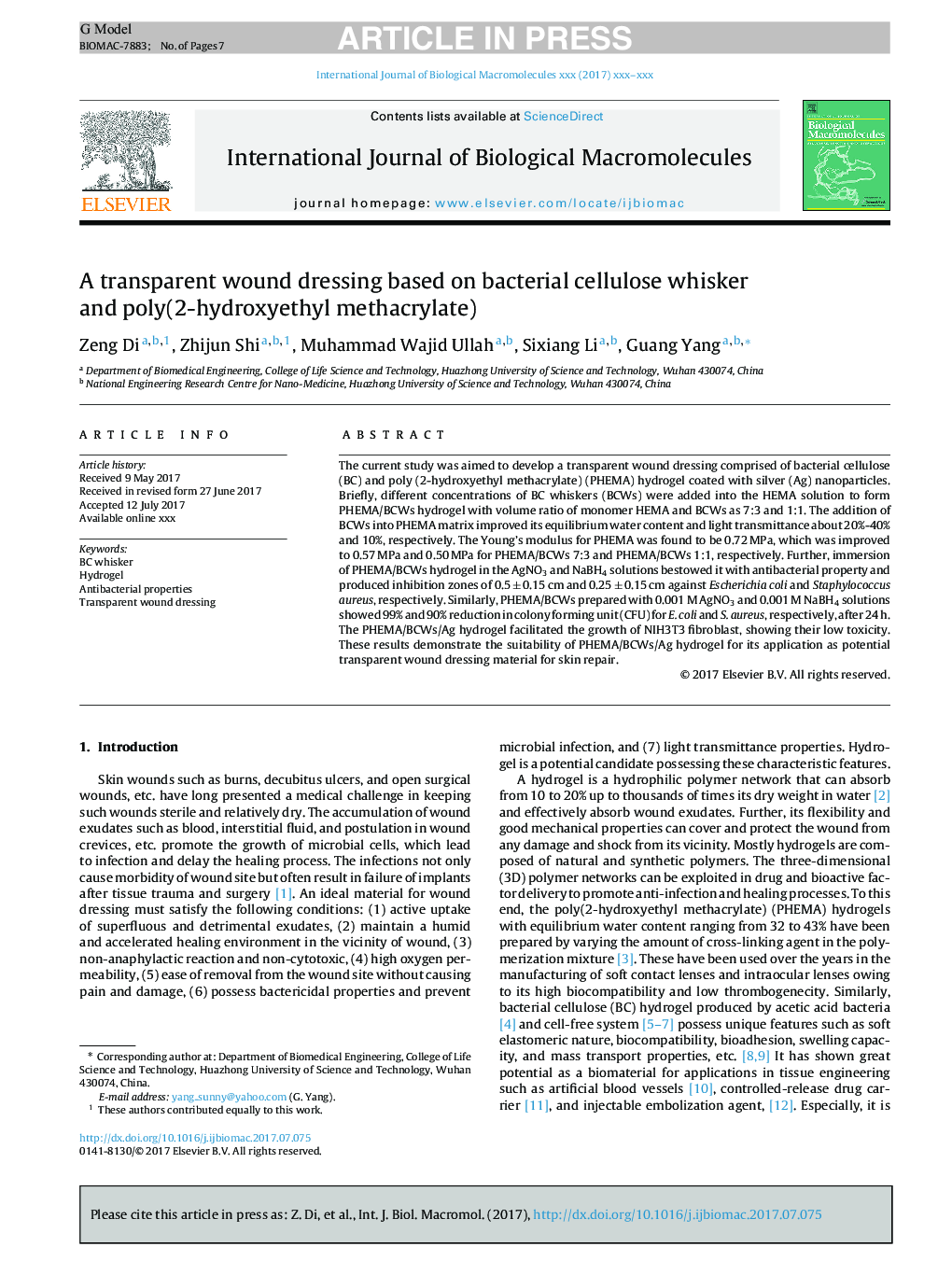| Article ID | Journal | Published Year | Pages | File Type |
|---|---|---|---|---|
| 8329544 | International Journal of Biological Macromolecules | 2017 | 7 Pages |
Abstract
The current study was aimed to develop a transparent wound dressing comprised of bacterial cellulose (BC) and poly (2-hydroxyethyl methacrylate) (PHEMA) hydrogel coated with silver (Ag) nanoparticles. Briefly, different concentrations of BC whiskers (BCWs) were added into the HEMA solution to form PHEMA/BCWs hydrogel with volume ratio of monomer HEMA and BCWs as 7:3 and 1:1. The addition of BCWs into PHEMA matrix improved its equilibrium water content and light transmittance about 20%-40% and 10%, respectively. The Young's modulus for PHEMA was found to be 0.72 MPa, which was improved to 0.57 MPa and 0.50 MPa for PHEMA/BCWs 7:3 and PHEMA/BCWs 1:1, respectively. Further, immersion of PHEMA/BCWs hydrogel in the AgNO3 and NaBH4 solutions bestowed it with antibacterial property and produced inhibition zones of 0.5 ± 0.15 cm and 0.25 ± 0.15 cm against Escherichia coli and Staphylococcus aureus, respectively. Similarly, PHEMA/BCWs prepared with 0.001 M AgNO3 and 0.001 M NaBH4 solutions showed 99% and 90% reduction in colony forming unit (CFU) for E. coli and S. aureus, respectively, after 24 h. The PHEMA/BCWs/Ag hydrogel facilitated the growth of NIH3T3 fibroblast, showing their low toxicity. These results demonstrate the suitability of PHEMA/BCWs/Ag hydrogel for its application as potential transparent wound dressing material for skin repair.
Keywords
Related Topics
Life Sciences
Biochemistry, Genetics and Molecular Biology
Biochemistry
Authors
Zeng Di, Zhijun Shi, Muhammad Wajid Ullah, Sixiang Li, Guang Yang,
